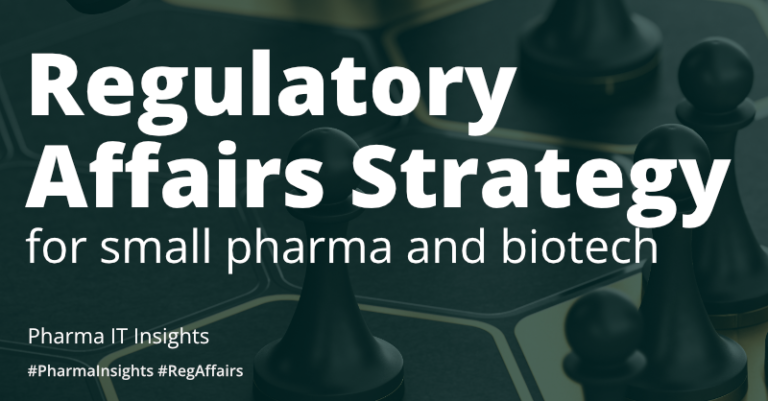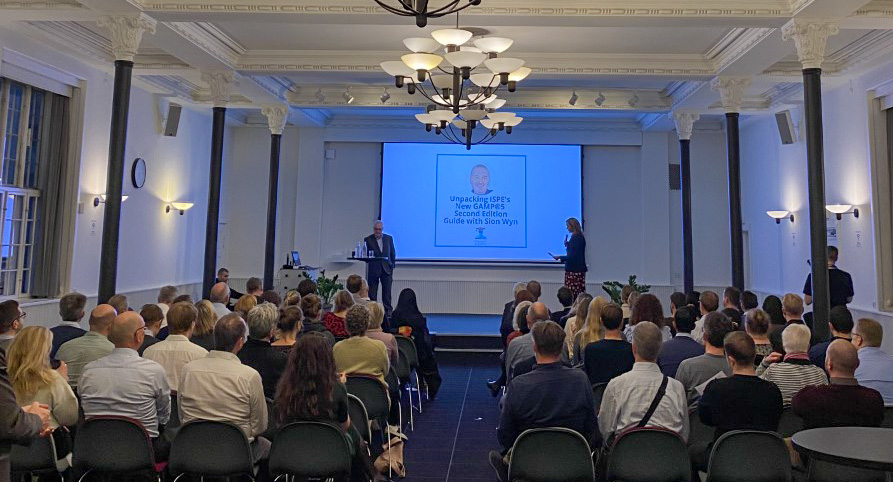
Share on email
Share on linkedin
Share on twitter
Share on skype
Share on facebook
By Naomi Jade Kellogg
November 29, 2022
By Naomi Jade Kellogg
November 29, 2022
The GAMP5 Guide is the leading guidance on computer systems compliance in the life sciences industry. In August 2022, a second edition of the guide was published by the International Society for Pharmaceutical Engineering (ISPE).
In November 2022, the Pharma IT Academy hosted Sion Wyn, one of the Guide’s editors, in Copenhagen for a exclusive event to unpack the new guide. Here are 3 Key Take Aways from the event:
The high level of regulation in the life sciences has hampered innovation and led some companies to apply rigid compliance-based approaches – which are not actually effective at improving product quality and managing patient risk. For this reason, Sion Wyn stressed that documentation and compliance should only be considered a baseline with companies striving further to minimize the number of defects and ultimately improve quality of the final product as the main goal. To do so, both the new GAMP 5 Second Edition and the US Food and Drug Administration (FDA) advocate for higher levels of critical thinking and risk-based agile approaches over a focus purely on documentation or regulatory compliance.

Some companies have adopted Computer System Validatin (CSV) approaches in which documentation is done only for the sake of compliance, and no care is taken to understand how and if the process is fit for purpose. These “Tick-in-the-box” compliance approaches are inefficient and ultimately counter-productive to quality. Critical thinking, however, can help us identify risks and how to control them in a way that is customized, risk-appropriate, and least burdensome – ultimately enabling the selection of the proper level for the validation activities.
To do so, expert CSV professionals working with regulated companies must possess:
Pharma IT can provide you with highly experienced consultants within IT Quality, Compliance, & Security.
Pharma IT can provide you with highly experienced consultants within IT Quality, Compliance, & Security.
Software development across industries is becoming overwhelmingly iterative and incremental. These processes are more collaborative and boast more constant communication between stakeholders, which can help prevent defects and increase the pace of new releases. Instead of constraining developers working with life science companies within existing linear approaches, the new GAMP5 Second Edition explains that CSV processes should reflect how software development is done in practice. For this reason, the Second Edition of the GAMP5 Guide includes a new appendix – D8 Agile Software Development.
When taking the example of testing, some principles that support both flexibility and agility for defect prevention include:
It should, however, be noted that these testing types require knowledgeable developers and testers who have strong competences as described in the critical thinking section above.
According to Sion Wyn, a main driver for the GAMP5 Second Edition’s publication was the COVID-19 pandemic, which underlined the essential role of innovation and technical advancement in the protection of public health.
By focusing on quality, engraining critical thinking in our CSV processes, and using agile approaches, we can continue to encourage technological advance without increasing risks to broader public health.
For these reasons, working with highly experienced CSV professionals is key to meaningful compliance.
Naomi Jade Kellogg is the Head of Communications & Culture at Pharma IT. She leads marketing, communications, employer brand management, culture building activities, and is also an editor of Pharma IT’s insights.